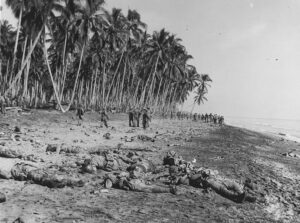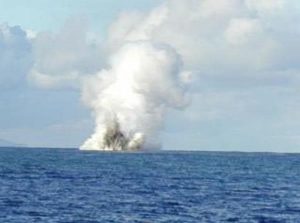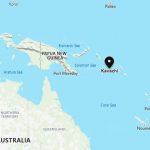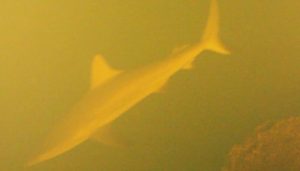solomon islands
 Amazingly, the islands of the world have held an importance during wartime, that most of us would never have dreamed. These seemingly insignificant places proved to be great staging places time and again, and so became places that were fought over viciously. The Solomon Islands were among those places fought over during World War II…most specifically Guadalcanal. The island of Guadalcanal is the largest of the Solomons Islands, which is in the South Pacific Ocean, located northeast of Australia. The Solomon Islands are a group of 992 islands and atolls, 347 of which are inhabited. The Solomons have 87 Indigenous languages. They were first discovered in 1568 by Spanish navigator Alvaro de Mendana de Neyra (1541-95). By 1893, the British had annexed Guadalcanal, along with the other central and southern Solomons, which made sense, since they also owned Australia. In 1885, the Germans took control of the northern Solomons, but transferred these islands, except for Bougainville and Buka (which eventually went to the Australians) to the British in 1900. So, the Solomon Islands have been transferred around some over the centuries, as most countries have been, a time or two anyway.
Amazingly, the islands of the world have held an importance during wartime, that most of us would never have dreamed. These seemingly insignificant places proved to be great staging places time and again, and so became places that were fought over viciously. The Solomon Islands were among those places fought over during World War II…most specifically Guadalcanal. The island of Guadalcanal is the largest of the Solomons Islands, which is in the South Pacific Ocean, located northeast of Australia. The Solomon Islands are a group of 992 islands and atolls, 347 of which are inhabited. The Solomons have 87 Indigenous languages. They were first discovered in 1568 by Spanish navigator Alvaro de Mendana de Neyra (1541-95). By 1893, the British had annexed Guadalcanal, along with the other central and southern Solomons, which made sense, since they also owned Australia. In 1885, the Germans took control of the northern Solomons, but transferred these islands, except for Bougainville and Buka (which eventually went to the Australians) to the British in 1900. So, the Solomon Islands have been transferred around some over the centuries, as most countries have been, a time or two anyway.
During World War II, Guadalcanal became a hard-fought-over island, with the Japanese in control in early 1943. Then, on February 8, 1943, Japanese troops evacuate Guadalcanal, leaving the island in Allied possession after a prolonged campaign. When Japan lost Guadalcanal, it paved the way for other Allied wins in the Solomon Islands.
The Japanese had invaded the Solomon Islands in 1942 during World War II and immediately began building a strategic airfield on Guadalcanal. On August 7, 1942, US Marines landed on the island, signaling the Allies’ first major offensive against Japanese-held positions in the Pacific. The Japanese response to the US Marines “boots on the ground” was to quickly launch sea and air attacks. The battles that followed were bloody and made even more miserable in the debilitating tropical heat. Nevertheless, the Marines fought hard with Japanese troops on land, and in the waters surrounding Guadalcanal, the US Navy fought six major engagements with the Japanese between August 24 and November 30. In mid-November 1942, the five Sullivan brothers from Waterloo, Iowa, died together when the Japanese sank their ship, the USS Juneau. These days they try not to put brother together in battle, but the Sullivan brothers had requested it, and so it was granted.

Both the United States and the Japanese suffered heavy losses of men, warships, and planes in the battle for Guadalcanal. It is estimated 1,600 US troops were killed and over 4,000 were wounded. Several thousand more died from disease. The Japanese lost 24,000 soldiers. Finally, on December 31, 1942, Emperor Hirohito told his troops they could withdraw from the area. About five weeks later, the Americans secured Guadalcanal. American authorities declared Guadalcanal secure on February 9, 1943. After the war, American and Japanese groups have repeatedly visited Guadalcanal to search for remains of missing soldiers. Some 7,000 Japanese remain missing on the island, and islanders still bring the Japanese groups bones that the islanders say are those of unearthed Japanese soldiers.
 I realize that many people, me included, would have no desire to explore the inside of a volcano, but for scientists of volcanos…volcanologists, it is somehow important. A dormant volcano would be fairly easy to explore. There is less chance of getting caught in an eruption, but for one that isn’t dormant, it isn’t so easy. I don’t think I would want to try to explore Kilauea, because…well, it goes up all the time. Another very active volcano, Kavachi is not only active, but it is underwater. Kavachi is located in the south-west Pacific Ocean, south of Vangunu Island in the Solomon Islands. and is referred to locally as Rejo te Kavachi, meaning “Kavachi’s oven.” Kavachi has become active and then eroded back into the sea at least eight times since its first recorded eruption in 1939.
I realize that many people, me included, would have no desire to explore the inside of a volcano, but for scientists of volcanos…volcanologists, it is somehow important. A dormant volcano would be fairly easy to explore. There is less chance of getting caught in an eruption, but for one that isn’t dormant, it isn’t so easy. I don’t think I would want to try to explore Kilauea, because…well, it goes up all the time. Another very active volcano, Kavachi is not only active, but it is underwater. Kavachi is located in the south-west Pacific Ocean, south of Vangunu Island in the Solomon Islands. and is referred to locally as Rejo te Kavachi, meaning “Kavachi’s oven.” Kavachi has become active and then eroded back into the sea at least eight times since its first recorded eruption in 1939.
It is very strange to me to see pictures and videos of volcano erupting in the middle of the ocean. It seems so unnatural that fire and water could mix and the water not put out the fire. It’s a strange concept, but one that has baffled me for years. I think that the thought of fire and water has maybe been the curiosity behind the exploration of these underwater volcanoes. In May 2000, an international research team aboard the CSIRO  research vessel Franklin fixed the Kavachi volcano at 8° 59.65’S, 157° 58.23’E. The vent of the volcano was below sea level, but frequent eruptions ejected molten lava up to 230 feet above sea level, and sulfurous steam plumes up to 1,600 feet. The team mapped a roughly conical feature rising from 3,600 feet water depth, with the volcano having a basal diameter of about 5.0 miles. Of course, underwater volcanoes were the foundation of the Hawaiian Islands, so it is not a odd idea that when the Kavachi volcano erupted in 2003, a 49-foot island formed above the surface. The small island disappeared a short time later, so I suppose the volcano would have to erupt almost constantly in order to form an island that would last.
research vessel Franklin fixed the Kavachi volcano at 8° 59.65’S, 157° 58.23’E. The vent of the volcano was below sea level, but frequent eruptions ejected molten lava up to 230 feet above sea level, and sulfurous steam plumes up to 1,600 feet. The team mapped a roughly conical feature rising from 3,600 feet water depth, with the volcano having a basal diameter of about 5.0 miles. Of course, underwater volcanoes were the foundation of the Hawaiian Islands, so it is not a odd idea that when the Kavachi volcano erupted in 2003, a 49-foot island formed above the surface. The small island disappeared a short time later, so I suppose the volcano would have to erupt almost constantly in order to form an island that would last.
Of course, that strangest thing about Kavachi is that while the volcano is quite active, it has another strange anomaly to it. In 2015, marine life has been found living inside the Kavachi crater, including two species of sharks and a sixgill stingray. It seems so strange that they could live in an environment that must be quite acidic. The scientists haven’t been able to go in and explore yet, because of the possibility of an eruption.  Finally they took a chance and dropped a camera into the volcano. Concerned about activity from the volcano, the expedition members only left the camera in the hot, acidic water around the volcano for about an hour. Still, it was all they needed to find the wildlife inside. Of course, during an eruption, there is no way this marine life could live inside the volcano. That makes me wonder if they somehow know the eruption is coming so they can get out, or do they simply die when an eruption occurs. That somehow doesn’t seem like the case, because eventually there would be no more marine life in the volcano. I guess that is just a question we will probably never have an answer to.
Finally they took a chance and dropped a camera into the volcano. Concerned about activity from the volcano, the expedition members only left the camera in the hot, acidic water around the volcano for about an hour. Still, it was all they needed to find the wildlife inside. Of course, during an eruption, there is no way this marine life could live inside the volcano. That makes me wonder if they somehow know the eruption is coming so they can get out, or do they simply die when an eruption occurs. That somehow doesn’t seem like the case, because eventually there would be no more marine life in the volcano. I guess that is just a question we will probably never have an answer to.

